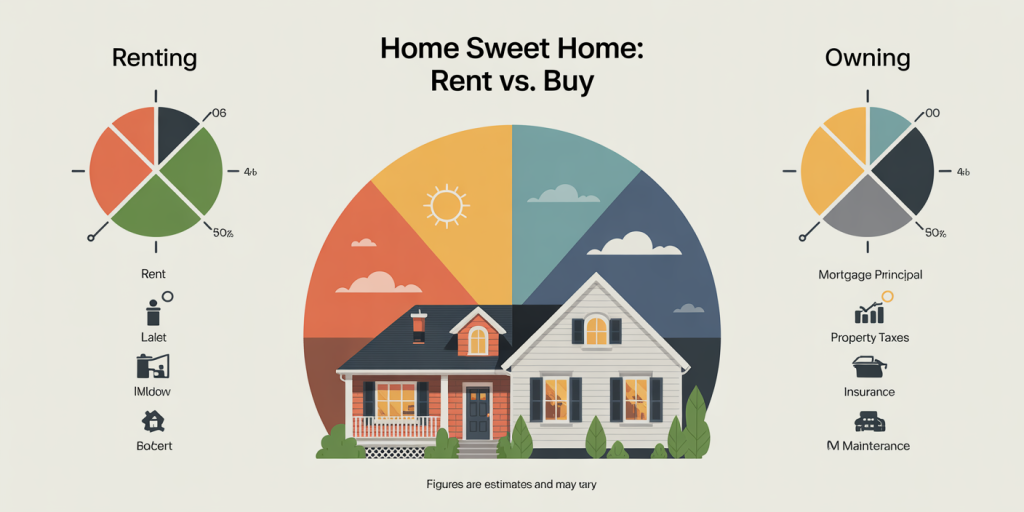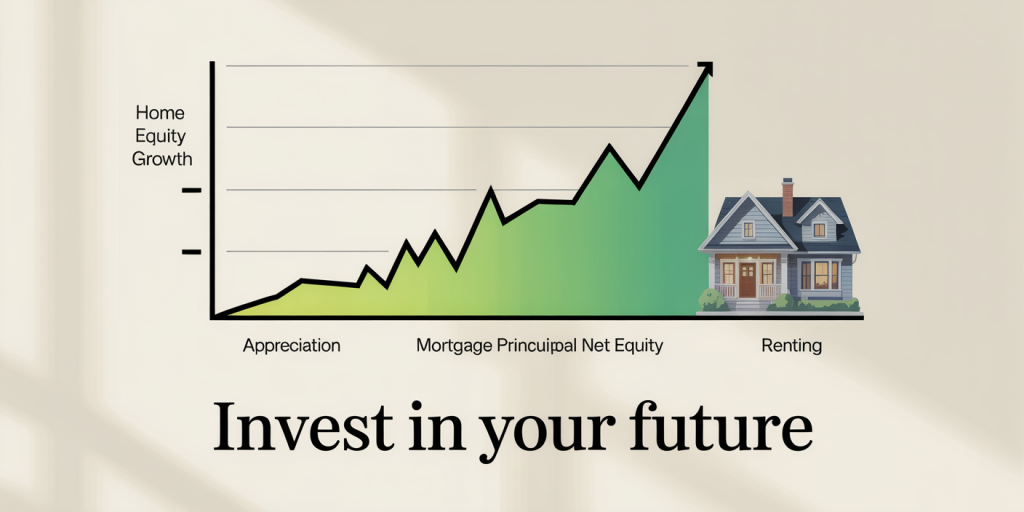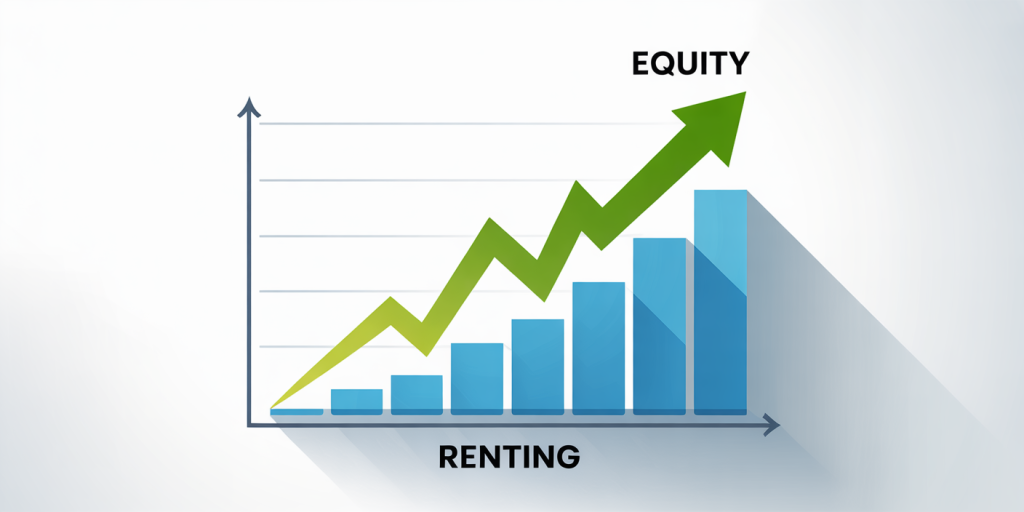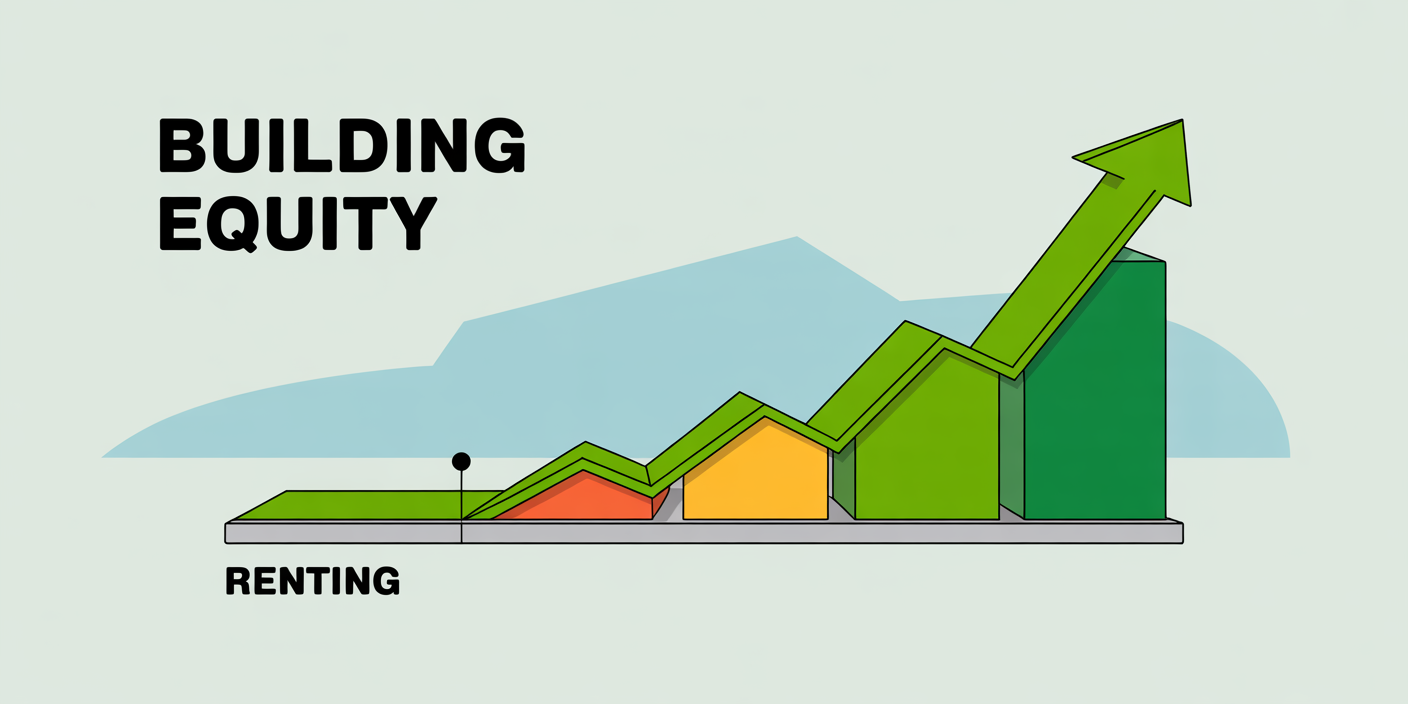Deciding between renting and owning a home is one of the most significant financial choices many individuals face. This decision not only impacts monthly budgets but also long-term wealth accumulation, lifestyle stability, and financial security. The housing market, fluctuating interest rates, and personal circumstances all play a role in this complex decision. Understanding the financial implications of both renting and owning is vital in making an informed choice that aligns with one’s economic goals and lifestyle preferences.
In recent years, the dynamics of the real estate market have shifted dramatically. According to the U.S. Census Bureau, the homeownership rate was approximately 65.5% in late 2023, a slight decrease from previous years, reflecting an increasing number of people opting to rent. Meanwhile, rising home prices have made ownership more challenging, especially for younger demographics. Conversely, renting offers flexibility but lacks equity-building opportunities. To dissect these factors thoroughly, this article expertly examines the financial dimensions of renting versus owning, backed by data, practical examples, and expert insights.
Monthly Cost Comparison: Rent vs. Mortgage
When comparing monthly housing costs, rent payments and mortgage obligations often appear similar on the surface; however, the underlying financial structures differ significantly. Rent payments typically include the base rental fee, and sometimes utilities or additional fees, whereas mortgage payments encompass principal, interest, property taxes, and insurance (PITI).

For example, consider a city like Austin, Texas, where the average rent for a two-bedroom apartment stands at approximately $1,800 per month as of 2024 (Zillow). Meanwhile, purchasing a median-priced home at $400,000 with a 20% down payment and a 30-year fixed mortgage at 6.5% interest translates to a monthly mortgage payment of around $2,000, excluding property taxes and insurance which can add an additional $400 per month.
| Cost Component | Renting ($) | Owning ($) |
|---|---|---|
| Base Rent/Mortgage | 1,800 | 2,000 |
| Utilities/Property Tax | 150 | 400 |
| Insurance | 0 | 100 |
| Maintenance/Repairs | 0 | 150 |
| Total Monthly Cost | 1,950 | 2,650 |
This data indicates that owners often face higher upfront and monthly expenses. However, homeowners may benefit from tax deductions on mortgage interest and property taxes, averaging tax savings of about $3,000 annually for middle-income households (IRS Data). Renters, on the other hand, generally do not benefit from such deductions.
Building Equity vs. Financial Flexibility
One of the most compelling arguments for homeownership is the ability to build equity over time. Each mortgage payment partially goes toward paying down the principal loan amount, effectively increasing the homeowner’s stake in an appreciating asset. According to the National Association of Realtors, U.S. homes increased their value by an average of 7.5% per year from 2010 to 2023, making real estate an essential wealth-building tool.

Take, for instance, a buyer who purchases a home for $400,000 and makes mortgage payments for 10 years. Over this period, they might pay down $70,000 of principal while the home appreciates to approximately $800,000. If they sell, after accounting for transaction costs (typically 6-8% of sale price), they could realize net equity gains of over $250,000. This wealth accumulation is impossible for renters, who invest in non-appreciating assets – their rental payments only grant temporary living rights.
Conversely, renting offers unmatched financial flexibility. Renters are free from property tax burdens, unexpected maintenance costs, and the often-debilitating responsibility of market fluctuations or illiquidity. For individuals expecting job relocations within a few years or those prioritizing mobility (e.g., young professionals), renting might present a better financial solution despite the lack of equity.
Upfront and Hidden Costs Associated With Ownership
Buying a home is not simply about the sale price. Upfront costs such as the down payment, closing costs, and moving expenses represent substantial financial barriers. Industry studies show the average down payment for first-time buyers is roughly 6-8% of the home price, meaning a $400,000 home would require approximately $24,000 to $32,000 upfront. Closing costs can add an extra 2-5%, amounting to nearly $10,000 in some cases.
Moreover, homeowners bear maintenance and repair responsibility, which renters avoid. According to HomeAdvisor, average annual home maintenance expenditures in the U.S. stand around $3,000, a figure that increases with home age and size. Unexpected repairs—such as roofing, HVAC systems, or plumbing—can lead to large, lump-sum expenses, potentially imperiling homeowners who lack emergency savings.
Renters may face security deposits and occasional rent increases, but these sums tend to be less daunting and more predictable. This financial predictability and lower upfront burden make renting an attractive option for those who prioritize liquidity and low financial risk.
Tax Implications and Incentives
Taxes play an essential role in the financial calculus of owning versus renting. Homeowners benefit from mortgage interest deductions and property tax deductions when itemizing returns, thereby potentially reducing their tax burden. For instance, the Tax Cuts and Jobs Act (2017) imposed some limits but still allows significant deductions for mortgage interest on loans up to $750,000 and property taxes up to $10,000 annually.
These deductions might reduce taxable income, effectively lowering the homeowner’s net housing cost. According to a report by the Tax Policy Center, approximately 18% of taxpayers claim the mortgage interest deduction, saving an average of $2,400 per year.
Renters do not receive direct federal tax benefits related to paying rent. However, certain states provide renter’s credits or deductions, though these tend to be modest. For example, California offers a renter’s credit of only $60 to $120 annually depending on filing status, a small offset compared to homeownership tax advantages.
Despite this, homeowners must consider the Alternative Minimum Tax (AMT) and newly introduced limits on state and local tax (SALT) deductions, which can diminish the net gains from tax benefits, especially in high-tax states.
Market Volatility and Asset Appreciation
Real estate is often viewed as a relatively stable investment, but it does possess volatility risks. Market downturns can lead to significant declines in home values, especially in overheated markets. For example, the 2007-2009 housing crisis saw average home prices drop by over 30% nationwide, leaving many homeowners with underwater mortgages.
For renters, market volatility does not directly threaten their housing costs—rent often fluctuates within a more manageable range tied to demand and inflation. However, rapid rent increases in competitive markets (e.g., San Francisco or New York) can strain renter budgets and cause displacement risks.
Long-term data still suggests real estate appreciation outpaces inflation. According to the Federal Housing Finance Agency (FHFA), average home prices have appreciated about 3.7% annually over the past 50 years. This steady growth supports the wealth-building case for owning, though it requires homeowners to weather short-term fluctuations and maintain liquidity to handle unforeseen costs.
Future Perspectives: Housing Trends and Financial Technologies
The future landscape of housing finance continues to evolve, influenced by demographic trends, technological innovation, and shifting economic conditions. Generation Z’s entrance into the housing market brings new preferences for flexibility and affordability. With rising student debt and wage stagnation, many young adults favor renting longer or seek shared ownership arrangements.

Technology is also reshaping financial pathways toward homeownership. Fintech startups now offer down payment assistance platforms, fractional real estate investing, and AI-driven mortgage underwriting that could lower entry barriers and increase access to home buying.
Furthermore, governmental programs are becoming more adaptive. For example, the expansion of first-time homebuyer tax credits and targeted subsidies can alleviate the financial burden of ownership. Simultaneously, emerging rent-control policies and affordable housing initiatives aim to improve the financial viability of renting in expensive urban centers.
Environmental and sustainability considerations also impact housing costs. Energy-efficient homes or green rentals may incur higher upfront investments but lead to long-term savings, influencing financial decisions between owning and renting.
As real estate markets and economic frameworks adapt, individuals must reassess their housing strategies continually, using data-driven insights and personal financial analysis to optimize their choice of renting or owning.
—
Choosing between renting and owning is deeply personal, tightly linked to financial capacity, life goals, and risk tolerance. This financial breakdown emphasizes that while ownership often carries higher upfront and ongoing costs, it offers unparalleled opportunities for wealth accumulation and personal stability. Renting, although simpler and more flexible, lacks equity-building potential but shields tenants from many ownership risks. With emerging economic trends, evolving housing policies, and technological advances, the future housing market promises new options, making an informed, strategic approach essential to navigate this critical financial decision effectively.

Deixe um comentário